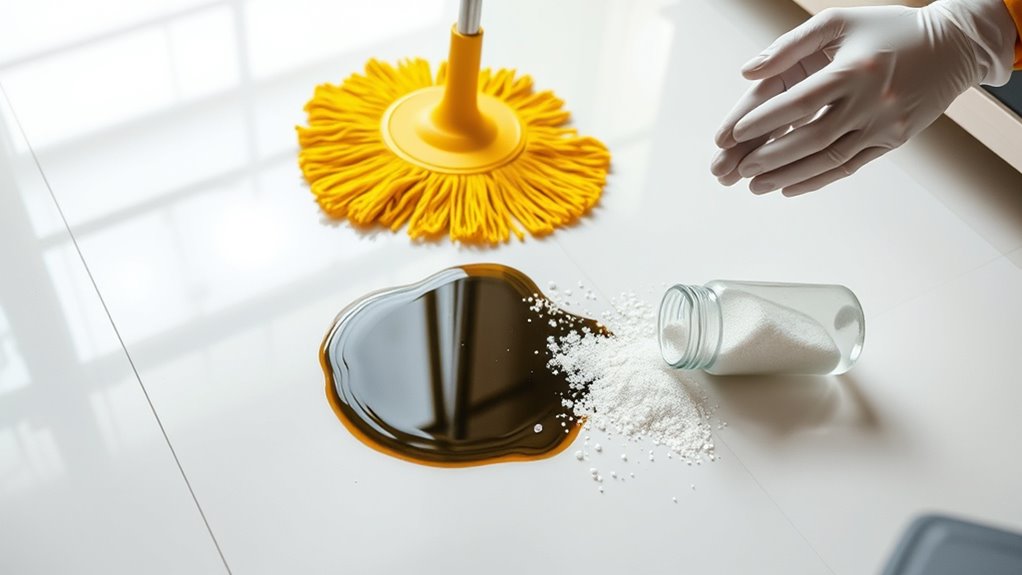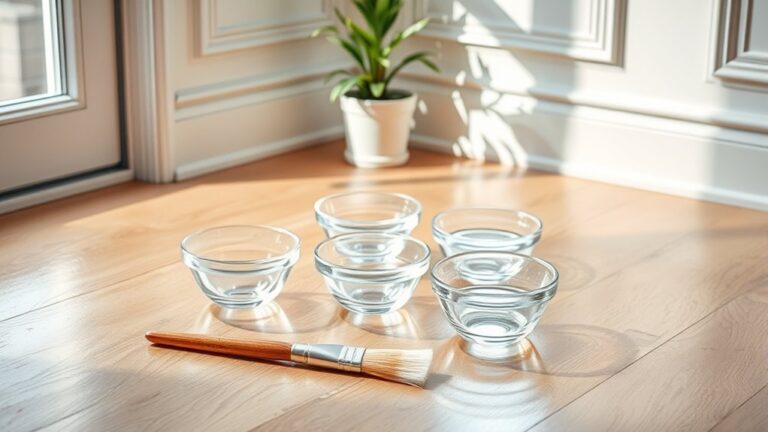First, identify the type of oil and your floor surface so you pick the right cleaning method. Next, blot up any excess oil carefully without rubbing. Then, sprinkle an absorbent like baking soda or cat litter and let it soak for 15-30 minutes before sweeping it away. Afterward, apply a suitable cleaning solution compatible with your 床 to break down the oil. Finally, rinse thoroughly with warm water and dry completely to avoid slippery spots. Follow these steps, and you’ll soon master effective oil removal.
Identify the Type of Oil and Floor Surface
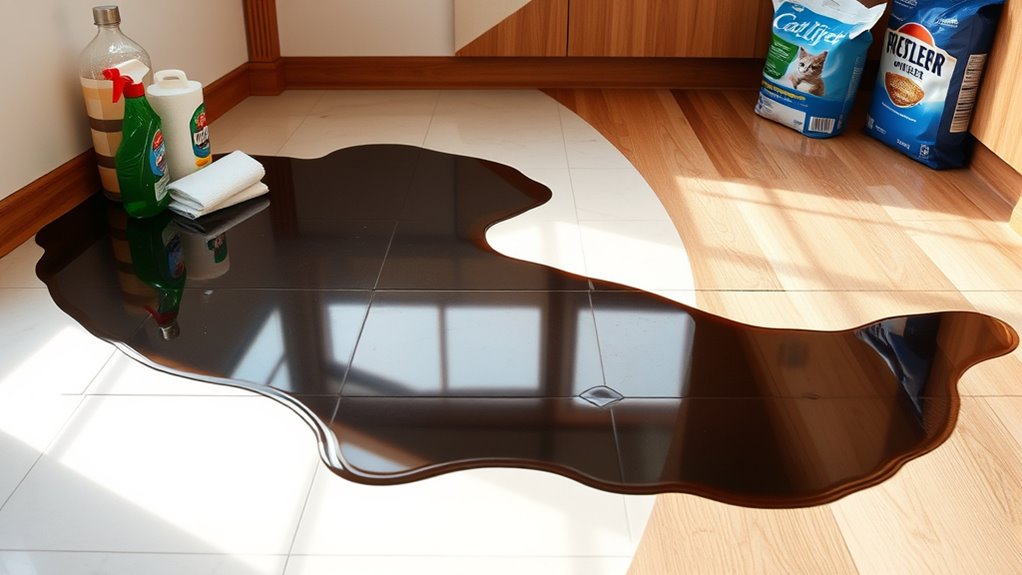
Before you begin cleaning, you need to identify the type of oil spilled and the floor surface involved. Different oil types—such as cooking oil, motor oil, or lubricant—require specific approaches. Cooking oil is lighter and may absorb differently than heavy motor oil. Next, consider the floor materials. Porous surfaces like wood or concrete absorb oil more deeply, demanding stronger cleaning agents. Non-porous floors like tile or vinyl resist absorption, allowing easier removal. Knowing these details allows you to choose the right products and methods, avoiding damage and saving time. By pinpointing oil types and floor materials, you take control of the cleanup, making the process efficient and straightforward. This step guarantees your freedom from stubborn stains without unnecessary trial and error.
Blot Excess Oil Immediately
Once you’ve identified the oil type and floor surface, act quickly to blot up any excess oil. Prompt action prevents deeper stains and makes cleanup easier. Use the right blotting techniques—avoid rubbing, which can spread the oil and embed it further.
| Oil Types | Recommended Blotting Materials |
|---|---|
| Motor Oil | Paper towels or microfiber cloth |
| Cooking Oil | Absorbent cloth or napkins |
| Hydraulic Oil | Clean rags or cotton towels |
| Vegetable Oil | Paper towels or cloths |
Work from the outside edge inward to contain the spill. Blot gently, pressing down to absorb without smearing. This method preserves your floor’s finish and gives you freedom to tackle the next cleanup step effectively.
Apply an Absorbent Material
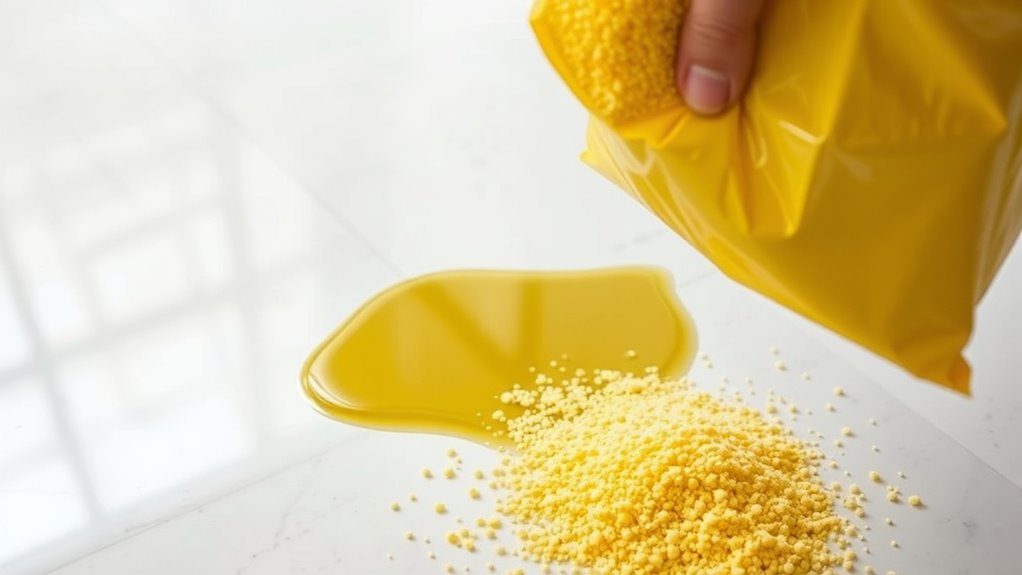
Three key absorbent materials—cat litter, baking soda, and sawdust—are your best options for soaking up oil from the floor. Start by generously covering the entire oil stain with one of these absorbent materials. This approach traps the oil, preventing it from spreading further. Let it sit for at least 15 to 30 minutes to guarantee maximum absorption. Afterward, sweep or vacuum the used absorbent material carefully, disposing of it properly. These cleaning techniques are straightforward yet effective, giving you control over a messy situation. By applying the right absorbent materials promptly, you reduce the risk of permanent stains and simplify the next steps in your cleanup process. Your freedom from stubborn oil spots begins with this simple, methodical application.
Use a Suitable Cleaning Solution
Selecting the right cleaning solution is essential for effectively breaking down and removing oil residue from your floor. First, choose cleaning agents specifically designed for oil removal, ensuring they target grease without damaging surfaces. Next, verify floor compatibility; some agents work well on concrete but can harm wood or vinyl. Always read product labels and test a small, hidden area before full application to avoid discoloration or damage. Apply the cleaning solution evenly over the affected area, allowing it to penetrate the oil. Use a stiff brush or cloth to agitate the surface gently, helping lift stubborn residues. By selecting suitable cleaning agents and respecting floor compatibility, you maintain your floor’s integrity while efficiently eliminating oil stains, freeing your space from mess and risk.
Rinse and Dry the Area Thoroughly
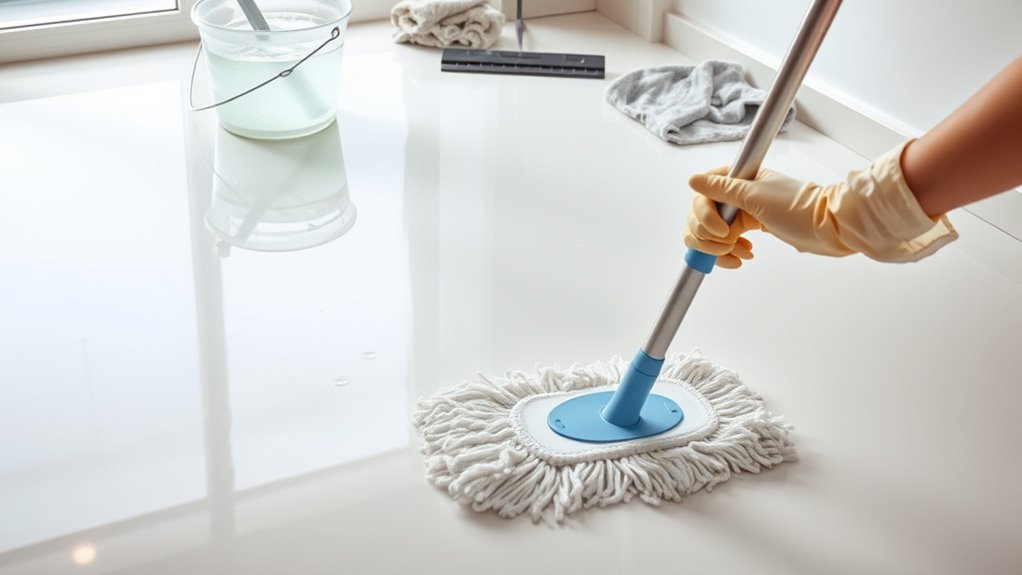
Flush the cleaned area with warm water to remove any remaining cleaning solution and loosened oil residue. Use a mop or sponge—your primary cleaning tools—to guarantee the floor surface is rinsed thoroughly. Next, dry the floor completely to prevent slippery conditions and maintain safety. Proper floor maintenance means never skipping this step, as moisture can attract dirt or cause damage. Use clean, dry towels or a dry mop for effective drying.
| タスク | Recommended Tool |
|---|---|
| Rinsing | Mop or sponge |
| 乾燥 | Dry mop or towels |
| Spot-checking | Bright light |
| Re-rinsing if needed | 温水 |
| Final inspection | Visual inspection |
Follow these steps methodically for a clean, safe floor you can trust.

